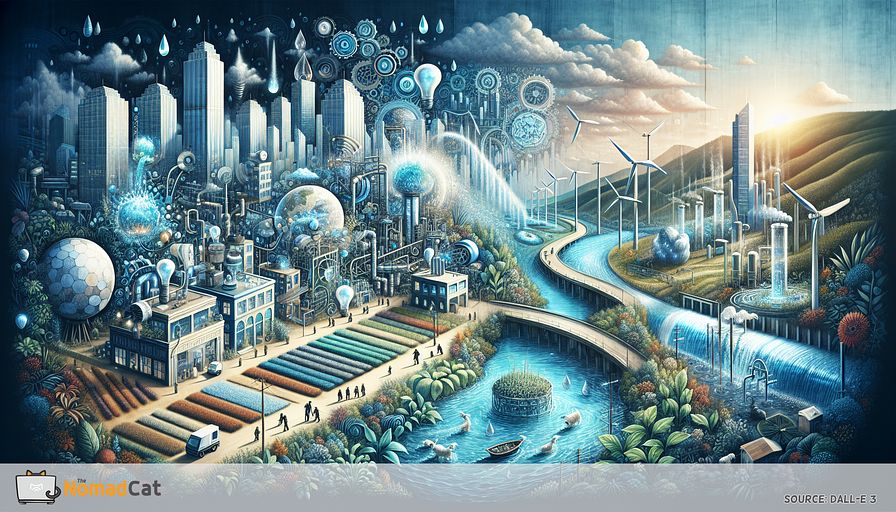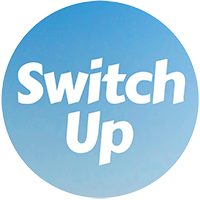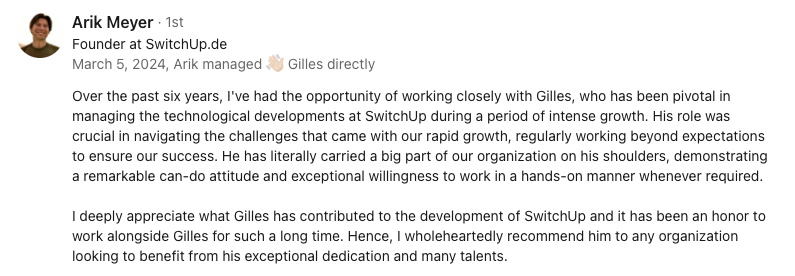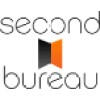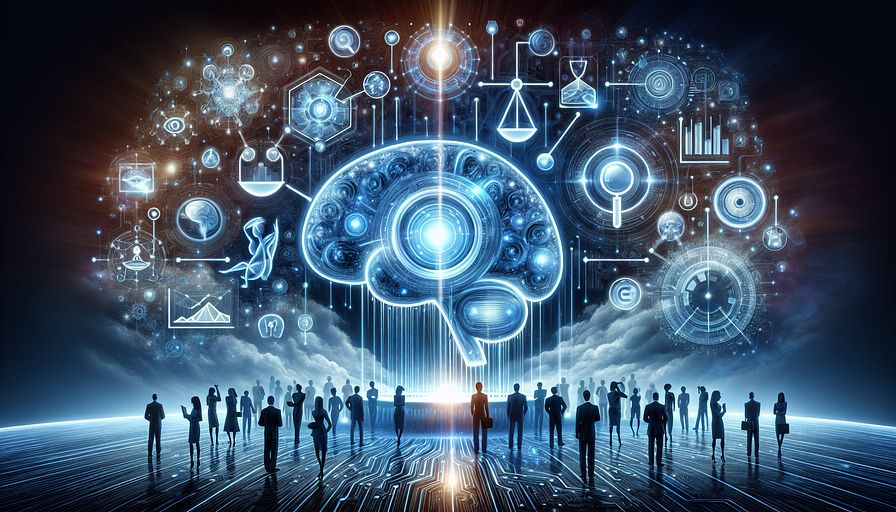Abstract:
The continuous push towards sustainability has led to significant advancements in water conservation technologies, aiming to address the critical need for water preservation in various sectors, including agriculture, industrial processes, and residential usage. These technologies range from high-efficiency irrigation systems that reduce water waste in farming practices to smart home devices designed to monitor and control water usage more effectively. The implementation of such innovations not only helps in mitigating the environmental impact but also results in substantial cost savings for users. Companies and governments are increasingly recognizing the importance of investing in water conservation technologies as a strategic approach to sustainable resource management. This article explores the latest developments in this field, shedding light on the mechanisms behind these technologies and their potential to reshape our water usage habits, ensuring a sustainable future for generations to come.
The significance of water preservation technologies
Water is often referred to as the source of life, but let’s face it, unless you’re a cactus, you can't get by with just a few sips! Preserving this invaluable resource has never been more crucial. Why? Because water scarcity is no longer a distant scenario depicted in dystopian movies; it’s a pressing issue affecting various parts of the globe. From the fields of agriculture to the industrial complexes and even our own homes, the need for effective water conservation measures is becoming increasingly essential.
The magic of water preservation technologies lies in their ability to make every single drop count. Whether we’re talking about the revolutionary high-efficiency irrigation systems ensuring crops get just the right amount of H₂O without wastage, or the amazing smart home devices that prevent overflows and leaks when you least expect them — these innovations are making waves (pun intended).
Agriculture is one of the biggest consumers of freshwater resources. Imagine the vast fields that require precise watering to maximize crop yield. Here, high-efficiency irrigation systems come into play, employing tech wizardry to ensure optimal water usage. This doesn't just benefit the crops, but also helps in maintaining the ecological balance.
On the home front, smart devices are becoming every homeowner's best friend. They can not only detect leaks but also suggest ways to reduce water usage. It's like having a personal water-saving assistant who never takes a break. Now, if only it could also remind you to drink enough water.
Industrial processes are another significant area where water conservation technologies are making a difference. Whether it’s recycling wastewater or employing cutting-edge filtration systems, industries are gradually embracing the need for sustainable water management practices. This not only ensures compliance with environmental regulations but also helps companies cut costs in the long run.
As we navigate through the intricate landscape of these innovations, government and corporate investments play a pivotal role in driving the advancements forward. Continuous funding and research are necessary to keep up with the growing demands and challenges posed by water scarcity.
In the end, the future of water preservation technologies looks promising. We’re not just talking about incremental advances but groundbreaking innovations that could redefine how we think about and use water. So let’s gear up for a journey that isn’t just about saving water but, quite literally, saving the world.
high-efficiency irrigation systems in agriculture
revolutionizing water usage on the farm
When you think of farming, you might picture vast fields of crops glistening in the sun. What you probably don't picture is the monumental amount of water needed to keep those crops flourishing. Agriculture is one of the largest consumers of freshwater resources, and inefficient irrigation can lead to substantial water waste. Enter high-efficiency irrigation systems — the unsung heroes making sure every drop is worth its weight in gold.
drip irrigation: precise and efficient
One of the most notable advancements is drip irrigation. Unlike traditional methods that can be as haphazard as watering your entire lawn for the benefit of a few dandelions, drip irrigation delivers water straight to the plant roots. Picture a network of tubes with tiny holes, like an IV drip for crops. This system significantly reduces water loss due to evaporation and runoff. Plants get their much-needed hydration without overindulging, promoting healthier growth and deeper root systems.
Drip irrigation isn't just about using less water; it's about using water smarter. Farmers can tailor the system to their specific crop needs and soil types, ensuring that water goes exactly where it's most effective. Plus, it minimizes weed growth, as water is delivered precisely to the plants rather than the surrounding soil.
smart irrigation controllers: technology meets agriculture
If drip irrigation is the silent partner, then smart irrigation controllers are the brainy tech whizzes behind the scenes. These devices can be programmed to water crops based on real-time data and environmental conditions. Using weather forecasts, soil moisture levels, and even satellite imagery, these systems decide when and how much to water. It’s as if Mother Nature had an app for precision watering!
These controllers are more than just cool gadgets; they’re game-changers. By adjusting irrigation schedules based on actual crop needs, they help farmers avoid the pitfalls of both under- and over-watering. Additionally, they can detect issues in the system, such as leaks or blockages, ensuring timely maintenance and further reducing water waste.
case studies: success stories on the ground
Take, for instance, the case of a vineyard in California, where water scarcity is a perpetual challenge. By adopting drip irrigation combined with smart controllers, the vineyard managed to slashed its water usage by nearly 50% while boosting grape yield and quality. Similar success stories can be found across different crops and regions, from fruit orchards in Spain to vegetable farms in India.
Farmers report not only water savings but also increased crop yields, healthier plants, and reduced labor costs. What’s not to love about a system that helps the environment and boosts profits?
beyond efficiency: fostering sustainability
High-efficiency irrigation systems aren’t just about watering more effectively; they’re a cornerstone of sustainable agriculture. By conserving water, these technologies help maintain the ecological balance and ensure that farming can continue on these lands for generations to come. They also reduce the strain on local water sources, benefiting entire communities.
In essence, high-efficiency irrigation systems transform the age-old practice of farming into a high-tech, sustainable endeavor. They’re the perfect blend of tradition and innovation, making sure our food supply is secure while keeping Mother Earth happy. So, next time you enjoy a juicy fruit or vegetable, give a nod to the marvels of modern irrigation making it all possible.
smart home devices for residential water management
innovative solutions for everyday water use
Managing water usage at home can sometimes feel like trying to catch water in a sieve. Whether you live in a house or an apartment, every drop counts when it comes to environmental conservation and keeping that utility bill in check. Fortunately, smart home devices are here to make water management not just practical, but pretty darn smart.
water usage monitoring systems: keep an eye on every drop
Let's start with water usage monitoring systems. These nifty gadgets track how much water you're using, and present the data in an easy-to-digest format. Imagine getting a report card on your water habits — it sounds scary, but this is one grade you’ll actually look forward to seeing. These systems can tell you which activities are guzzling the most water, making it easier to pinpoint where you can cut back.
For example, a study by the Environmental Protection Agency reported that homes using water monitoring systems saw an average reduction of 20% in their water usage. Just think of the savings — both environmentally and financially. It’s like having a mini water detective on duty 24/7, ensuring that you're always in the know.
leak detection devices: catching the sneaky drips
Next, we’ve got leak detection devices. These little lifesavers can spot a leak faster than you can say, "Who left the tap on?" Leaks can be stealthy, often going unnoticed until they cause significant damage. According to the American Water Works Association, a single home can waste about 10,000 gallons of water annually due to leaks alone. That’s enough to fill a small swimming pool!
But with smart leak detectors, you’ll be alerted at the first sign of trouble. Some systems are so advanced that they can even shut off the water supply automatically to prevent disaster. It's like having a guardian angel for your plumbing. And let's admit it, who wouldn’t want that peace of mind?
smart meters: intelligent tracking at its best
If you’re looking for a way to monitor overall water usage with precision, then smart meters are your go-to. These devices provide real-time data and insights into how much water your household is consuming. Unlike traditional meters that just sit there and count, smart meters interact with you. They can send you alerts, tips, and even forecast your water bill based on current usage. Pretty clever, huh?
Smart meters have been particularly effective in cities that implement tiered water pricing. Households using these meters have reported savings between 10-15% simply by being more aware of their consumption patterns. Plus, the data collected can help city planners improve water distribution networks, benefiting the community as a whole.
case studies: real-world applications and benefits
Take the case of John and Jane from Seattle. After installing smart water monitors and leak detectors, they noticed a 25% drop in their water bill within just three months. They found out their lawn sprinklers were running twice as much as needed, and a tiny leak in their basement was silently draining both water and their wallets. By addressing these issues promptly, they saved money and contributed to local conservation efforts.
Another example comes from an apartment complex in Austin, Texas. By equipping all units with smart meters and water leak detectors, the management saw a 30% reduction in water usage. Even better, tenant satisfaction went up as they enjoyed lower utility costs and fewer disruptions from plumbing issues.
dual benefits: environmental and cost savings
The beauty of smart home water management devices is that they offer a dual benefit. Firstly, they help save the planet by reducing water wastage. Secondly, they save you money, which is always a win-win. These devices turn you into an eco-warrior, one drop at a time, without demanding too much effort on your part.
So next time you see a spike in your water bill or suspect a leaky faucet, remember that smart home devices are your new best friends. They're not just about cutting costs; they play a pivotal role in conserving one of our most vital natural resources. Cheers to smart tech and smarter living!
industrial water conservation technologies
redefining water management in industry
If residential and agricultural water conservation techniques are akin to gently steering a car, then industrial water management is like navigating a cargo ship through a busy harbor. Industries are significant water consumers, and inefficient practices can lead to extraordinary wastage. Thankfully, technological advances are making a difference in this space. When it comes to conserving water, industrial processes are harnessing technologies that range from water recycling to advanced wastewater treatment, coupled with process optimization techniques.
the magic of water recycling
Water recycling involves treating and reusing water within the same facility, cutting down on fresh water intake and reducing the volume of wastewater generated. Think of it as giving water a second life. Various industries like textiles, food processing, and electronics have embraced water recycling with gusto. By treating water to remove contaminants and reusing it within production processes, industries can significantly lessen their environmental impact. It's like having a never-ending supply of water that miraculously reappears — only it's science, not magic.
advanced wastewater treatment: turning muck into magic
Then there's advanced wastewater treatment — a phrase that sounds as complex as it is groundbreaking. These treatments employ sophisticated methods such as membrane filtration, ultraviolet disinfection, and biological processes to purify industrial wastewater to a high standard. Imagine a superhero team of technologies fighting off pollutants and contaminants. This allows companies to either reuse the treated water or safely discharge it, adhering to stringent environmental regulations. It’s a win-win — industries get to save on water costs while playing their part in environmental stewardship.
process optimization: making every drop count
Of course, water recycling and treatment are only pieces of the puzzle. Process optimization techniques can dramatically reduce water usage. This involves scrutinizing and refining every stage of production to ensure minimal water wastage. Industries are now utilizing smart sensors and IoT technologies to monitor water usage in real-time, making data-driven decisions to enhance efficiency. It's akin to having your production line constantly coached by an elite water-saving guru.
expert insights: why it matters
Quotes from industry experts highlight the pressing need for these advancements. "If we don't innovate, we stagnate," says Dr. H2O Conservation, a leading voice in industrial water management. "Implementing robust water-saving technologies is not just an environmental imperative but an economic one. Industries can save millions by recycling water and optimizing processes." Another expert, Ms. Aqua Sustainable, adds, "The key lies in integrating these technologies seamlessly into existing operations. The goal is to make water conservation an effortless part of industrial activity."
benefits beyond the obvious
The advantages extend beyond water savings. Companies adopting these technologies often find themselves receiving positive public relations, benefiting from regulatory incentives, and even gaining a competitive edge. Sustainable practices resonate well with today's consumers, who are increasingly making choices based on corporate responsibility. So, adopting industrial water conservation technologies can turn into a tremendous business advantage — quite the bonus for simply being water-wise.
With these innovative solutions in place, industries can move forward with a clearer conscience and a fuller wallet, knowing they’re contributing positively to critical global water resources. Redefining how industries approach water usage not only strengthens their bottom line but also makes them frontrunners in the essential shift towards sustainability.
government and corporate investment in water conservation
Investing in water conservation technologies is no longer a niche interest; both governments and corporations are recognizing it as a strategic necessity. Why? Because smart resource management today ensures a sustainable tomorrow—and let’s face it, nobody wants to face a future where water is as rare as a unicorn.
public policy initiatives: paving the way
Governments worldwide are stepping up their game with public policy initiatives aimed at promoting water conservation. These policies often include financial incentives, such as grants and subsidies, to encourage businesses and households to adopt water-saving technologies. Think of it as a little nudge from the government, saying, "Hey, why not save some water — and money — while you’re at it?"
- Grants and subsidies: Available for sectors like agriculture and industry, these funds support the adoption of innovative water-saving technologies.
- Regulations: Compliance with stringent water usage and wastewater discharge standards forces industries to get creative with water management.
corporate initiatives: leading by example
Corporations aren't just jumping on the bandwagon; many are driving the water conservation movement themselves. Leading companies are investing in advanced technologies and sustainable practices, not just to tick the "corporate responsibility" box but to gain long-term benefits.
- Sustainability reports: More companies are including water usage metrics in their sustainability reports, setting clear goals and tracking progress.
- Collaborations: Partnerships between corporates and environmental groups are growing, bringing expertise and resources together to tackle water issues more effectively.
the role of public-private partnerships
The most effective strategies often come from collaboration between the public and private sectors. Public-private partnerships can lead to shared research initiatives, larger-scale projects, and broader adoption of innovative solutions. Imagine a dream team of superheroes, but instead of fighting crime, they’re fighting water scarcity. Cool, right?
long-term benefits: more than just a drop in the bucket
The ripple effect of these investments is significant. Companies benefit from cost savings, improved public image, and sometimes even regulatory incentives. Governments, in turn, achieve better resource management, environmental protection, and economic stability. It’s a classic win-win, except in this case, everyone’s a winner — even Mother Nature.
From public policy initiatives paving the way to corporate strategies redefining what it means to be sustainable, investment in water conservation technologies is proving essential. It’s an investment not just in technology but in our collective future. So, whether it’s a government grant or a corporate sustainability report, every effort contributes to keeping our planet blue and green.
future of water preservation technologies
emerging trends: a peek into the crystal ball
Looking ahead, the future of water preservation technologies promises to be as exciting as the latest season of your favorite binge-worthy series. What's on the horizon? We're talking about cutting-edge advancements that will make today's tech look like yesterday's news.
To start with, expect to see more of artificial intelligence and machine learning making themselves indispensable. Imagine AI-driven systems that not only monitor water usage but also predict future needs and suggest ways to optimize every drop. Think of it as having a water-savvy personal assistant who’s always one step ahead.
nanotechnology: the small wonders
Another thrilling development is in the realm of nanotechnology. These tiny marvels can purify water at the molecular level, removing contaminants more efficiently than current methods. Advanced nanomaterials are being developed to not just filter out impurities but also to neutralize toxins. With a dash of nanotech, even the grimiest water can become sparkling clean.
3D printing: reinventing water infrastructure
3D printing isn’t just for creating cool gadgets and prototypes anymore. Its applications in water preservation are monumental. From customized irrigation parts to intricate water filtration systems, 3D printing offers timely and cost-effective solutions. Picture printing a perfectly tailored water-saving device right at the farm or factory, reducing both manufacturing time and material waste.
blockchain for water management: secure and transparent
Blockchain isn’t just for cryptocurrencies; it’s set to revolutionize water management too. Using blockchain, water resource data can be recorded transparently and securely, making it easier to track consumption, detect fraud, and enforce regulations. Imagine a transparent ledger where every drop is accounted for — water management just got a tech upgrade.
expert predictions: voices from the field
Experts believe that continuous research and investment will pave the way for innovations that we can barely imagine today. "The future will see water-saving technologies become more integrated and automated," predicts Dr. Aqua Future, a leading research scientist. "Tech will not only manage water more efficiently but also educate users, creating an informed public that values water conservation."
Another visionary, Prof. H2O Smart, shares, "We're already seeing the convergence of various technologies like IoT, AI, and nanotech in water management. The future will be about seamless integration, ensuring that humans don’t just coexist with these technologies, but thrive because of them."
pathways to a sustainable tomorrow
The ultimate goal is to make water preservation second nature. The hope is that one day, saving water will be as intuitive as uploading an Instagram story. Continuous R&D efforts will inevitably lead to smarter, more efficient technologies that not only conserve water but also promote global sustainability.
In closing, the future of water preservation technologies looks bright, full of possibilities, and brimming with innovations that could change the way we live. So, let’s raise a glass (of water, of course) to the future — sparkling, sustainable, and smart.
reaffirming the importance of water conservation technologies
Water conservation technologies are not just tools but cornerstones for a sustainable future. From high-efficiency irrigation systems turning farming into a precision science to smart home devices acting as vigilant water managers, these advances impact every aspect of our lives. On the industrial front, innovations are transforming water usage, proving that even the most resource-intensive processes can be eco-friendly. Meanwhile, the commitment from both government and corporate sectors underscores the essential role of collective effort in this mission.
The potential of emerging technologies, like AI, nanotech, and blockchain, promises an even brighter future. These innovations will not only make water conservation more efficient but will also embed it into the fabric of daily life and business operations. As we look forward, the importance of continued investment and innovation in water preservation can't be overstated. Let’s embrace these advancements, ensuring a sustainable and water-wise world for generations to come. Here's to a future where every drop counts and every effort makes a difference.
You might be interested by these articles:
- Innovating for Water Savings
- Pioneering Water Saving Solutions
- Smart Tech Revolutionizes Urban Water Management

